Cancer control by SCK CEN
Maximum effort towards targeted, internal radiotherapy
What medical radioisotopes does SCK CEN work with?
Do you want to develop radiopharmaceuticals? Then not only the choice of the radioisotope, but also access to it is crucial. SCK CEN focuses primarily on isotopes whose supply is assured, thanks to BR2 or future, new facilities such as CRF or MYRRHA/MINERVA.
Our current portfolio of therapeutic radionuclides:
- Ac-225
Actinium-225: a rare radioisotope, so its worldwide use is kept to a minimum for now. PanTera, the spin-off of SCK CEN and IBA, should solve the supply problems. SCK CEN is driving the growth of the spin-off with further research into crucial production techniques.
- Sm-153
Samarium-153: produced today by mass separation in collaboration with CERN-MEDICIS (PRISMAP) , and possibly in the future through our own ISOL@MYRRHA, a lab linked to MYRRHA/MINERVA.
- Re-188
Rhenium-188: a radioisotope that is very attractive for use in therapeutic medicine. SCK CEN is involved in the European Secure project, which aims to facilitate sustainable production on a larger scale.
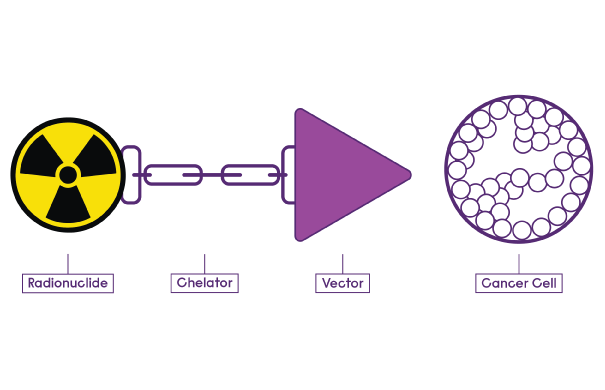
What do you need to develop a radiopharmaceutical?
To develop a radiopharmaceutical, you need the following:
- Radionuclide or radioisotope: SCK CEN researches and produces these itself.
- Targeted vector or carrier to reach the cancer cell: to find the carriers (biomolecules), SCK CEN mainly works with external partners.
- Chelator or the link that holds the radioisotope and the vector together: SCK CEN focuses on creating an ideal chelator as well as optimising radiolabeling (a technique to follow the path taken by a molecule through microscopic cells or chemical reactions).
What activities does SCK CEN perform?
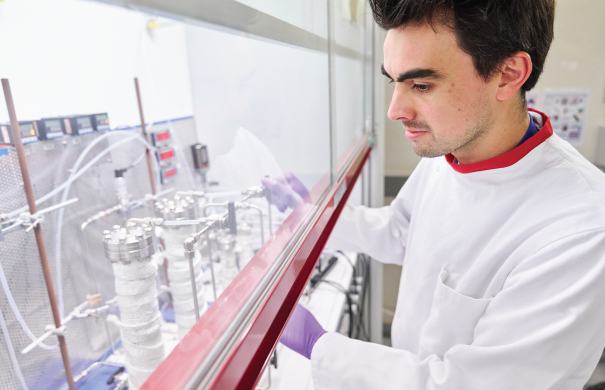
1. Radioisotope research and development
The production of radioisotopes is complex. SCK CEN develops production processes and the necessary technologies to ensure quantity and quality. In addition, we are aiming to scale up radioisotopes Lu-177, Tb-161 and Ac-225. Obviously, everything is done according to GMP guidelines.
In addition, pilot production for radioisotopes that deserve further investigation, such as Sm-153, is also underway. We are already producing that today together with CERN-MEDICIS in the context of PRISMAP. SCK CEN irradiates Sm-152 targets in BR2 to Sm-153. MEDICIS performs mass separation, after which you are left with Sm-153 with a high specific activity. After a final radiochemical separation by our experts in Mol, the product is ready for labelling as radiopharmaceuticals. Further research should reveal how to increase production yields.
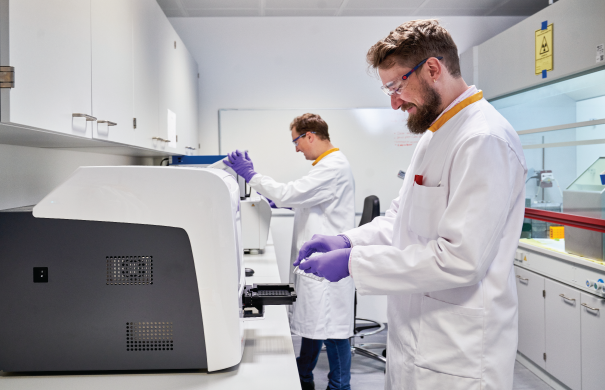
2. Chelator development & radiolabeling
You can only radiolabel a carrier molecule once you have a suitable chelator. SCK CEN wants to develop an optimal chelator that allows radiolabeling of biomolecules for all the isotopes it works with. We are also exploring new and innovative ways to chemically link chelators to carrier molecules, while continuing to tinker with current techniques to improve them.
Have we found and produced suitable chelators? Then we will focus our research on the optimisation of radiolabeling. For each of our candidate pharmaceuticals, we evaluate the best conditions, followed by a comprehensive characterisation of stability with different carriers.
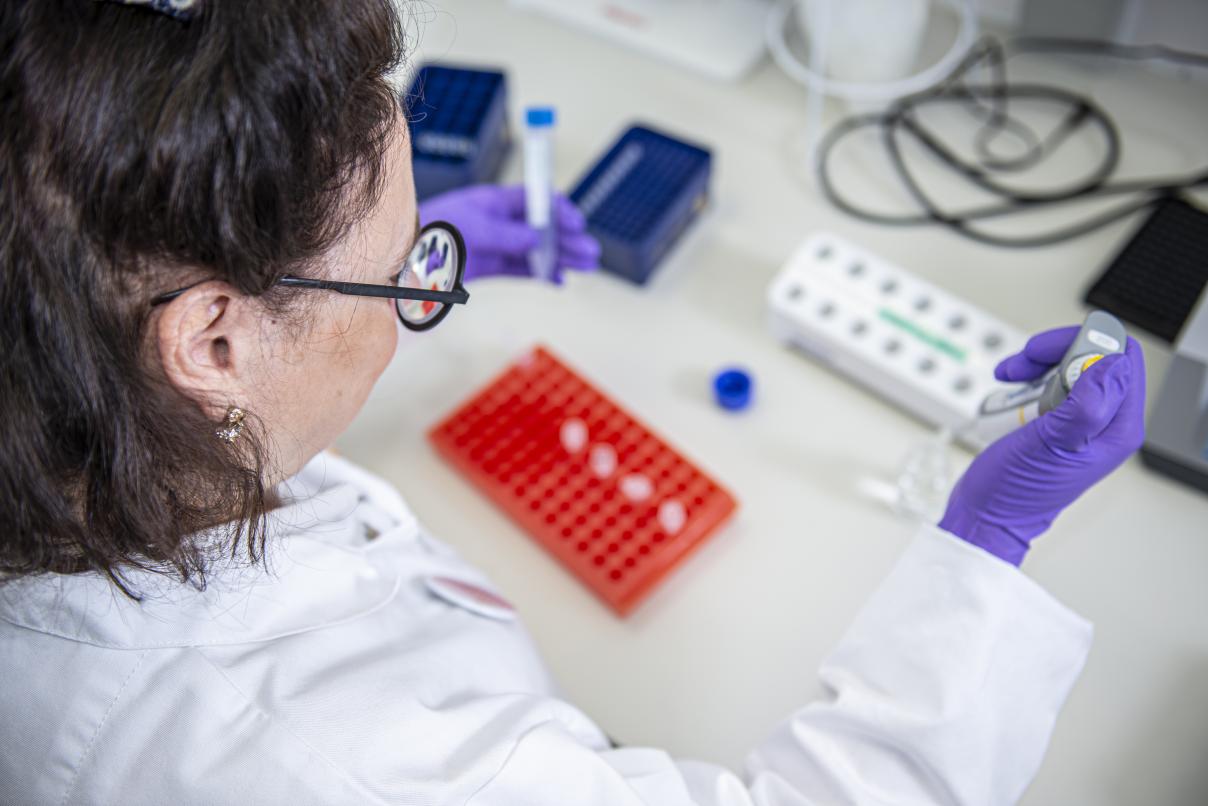
3. Biological, preclinical evaluation
The efficacy of our emerging drugs is evaluated by our own SCK CEN experts. Using in vitro and in vivo techniques, they monitor the binding characteristics of the radiopharmaceutical to tumour tissue and assess its biological impact. What does the product do to the body? How much of the radioisotope 'sticks' to the cancer cells? What happens to the cells after exposure to this amount of radioactivity? The answers are crucial to adapting innovative radiopharmaceuticals where needed and readying them for future clinical research.
Our radiobiologists want to learn all about the potential radiopharmaceutical. In-depth physiopathological research is therefore in order: How can we explain and prevent possible side effects? How do we protect healthy tissue? Is there a way we can make the tumour more sensitive to the radiopharmaceuticals? We are making every effort to not only launch new drugs, but also keep improving them.
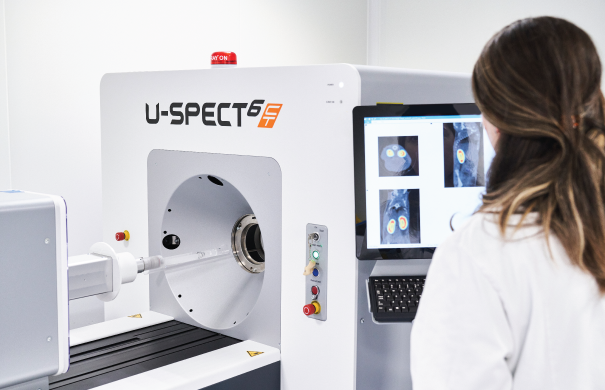
4. Evaluation and prediction of radiation doses
In this context, we also carry out preclinical dosimetry research into the relationship between the biological effects and the received radiation dose in the body. Specifically, how do radioactive materials spread in cells or tissue? How does this translate into the amount of radiation absorbed by cancer cells and/or healthy cells? With radionuclide therapy, these issues are slightly different than with external cancer radiotherapy, where radiation is delivered to the tumour in a homogeneous manner and in a very short period of time. In radionuclide therapy, the radiation dose is delivered over a longer period of time and is characterised by a heterogeneous dose distribution. Our experts investigate this through extremely detailed computer modelling.
In addition, there are numerous other issues in the field of 'dosimetry', given that targeted internal therapy is still so new. Suppose that today, 2 patients are treated with this cancer therapy. They will both receive the same, standard activity. SCK CEN is participating in research on how we can administer a personalised amount of radioactivity per patient. The more precisely you can detect and quantify radioactivity, the more clearly you can predict the biological effects and the more efficiently you can treat the patient.
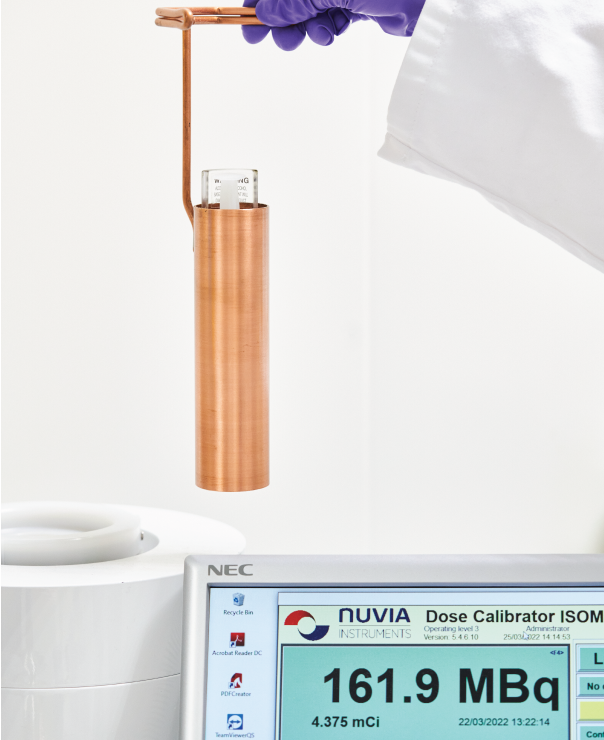
5. Metrology for nuclear medicine
Does a physician want to set up treatments with radiopharmaceuticals? Then he will need not only the right ingredients and knowledge, but certainly also reliable infrastructure. SCK CEN calibrates radiation devices used in the medical sector. In nuclear medicine, the activity to be administered to the patient is measured with a radionuclide calibrator.
SCK CEN has examined the accuracy of such devices in national and international intercomparison exercises and found that there is still work to be done in this area. The FIDELIS instrument can very accurately calibrate any radionuclide calibrator for different radioisotopes. It is also the standard to validate other devices.
📧 Curious about our way of working? Interested in our calibration services? business [at] sckcen [dot] be (Let us know)!